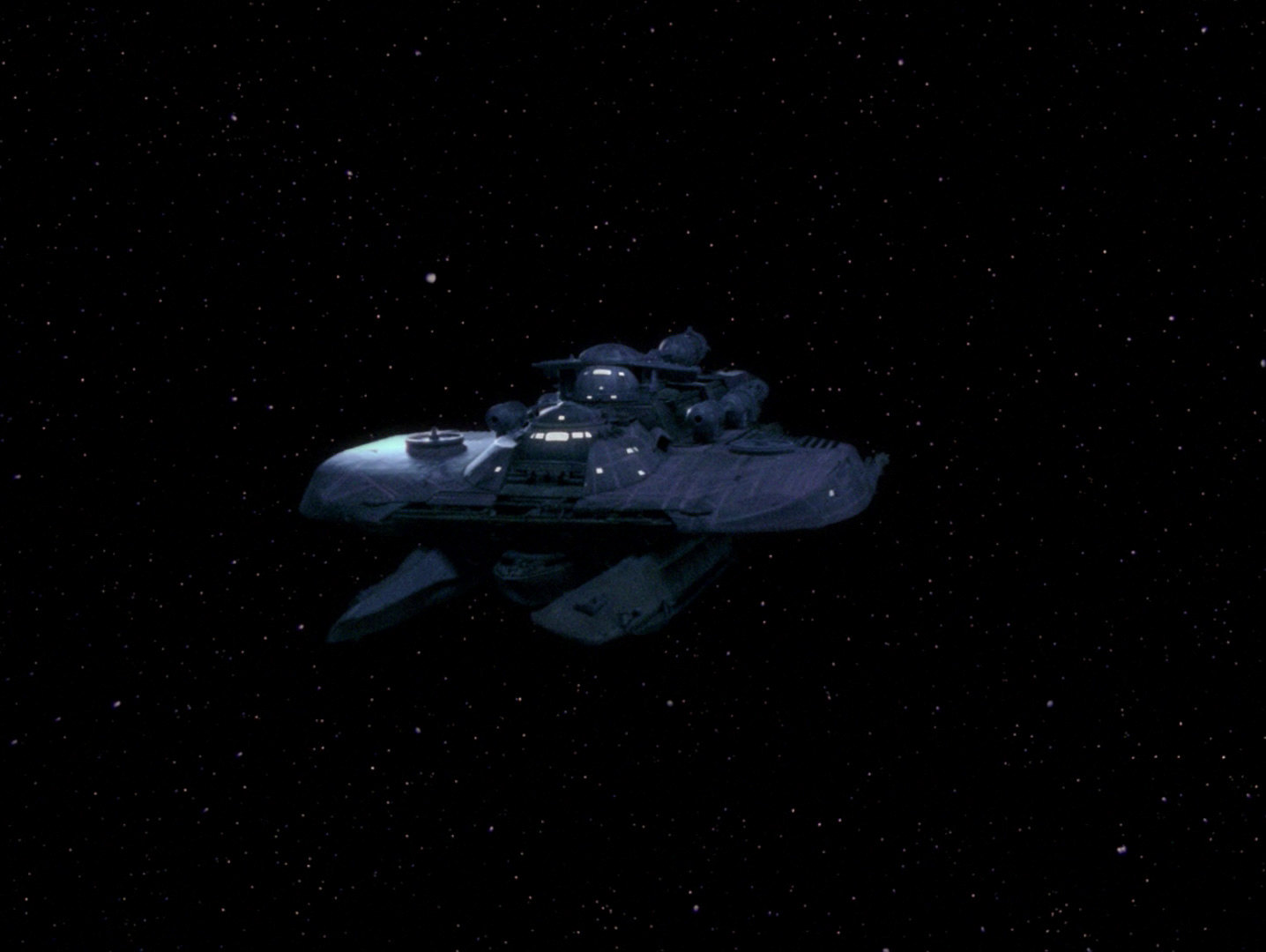The problem is that This should be physically impossible given that Warp Nacelles are actually mandatory if you want to actually get someplace anytime soon, and that alone is going to eat 15-20 kilotons.
A tiny 30K BoP is a commerce raider, which requires a certain degree of endurance, but with only 15-10 kilotons of mass left that has to go into everything else, this should be impossible. The alternative is that their Warp Nacelles operate several generations behind everyone else's, but in exchange are highly miniaturized. I can buy that.
But that means you need to load supplies, because you can't just Commerce Raid your way across empty space until you find a target. It means you need sensors to detect one, or an insanely sophisticated "Just in Time" logistics setup that can ensure your cloaked commerce raiders don't need to carry more than maybe a week's supplies with them and never miss their delivery. You need fuel, you need...
Look, there's just so many things that you can't handwave off that costs Mass. Having all of this and the armaments to do more than tickle a dedicated-for-purpose starship strains plausibility to the breaking point and beyond.
It's much more reasonable to just go "It's 30 kilotons of mass... After you ignore the Necessary Components that are physically required to even come to the table."
I don't care if canon says otherwise. Because if that were true, it would mean the Klingon Empire have mastered miniaturization of technology that the Borg could only dream of, hundreds of years before they were first discovered. Something has to give.
Either Birds of Prey are functionally parasite craft that go out in short-range wolfpacks attached to an invisible tender ship that can make sure they're always supplied at all times and have never been detected or discovered across all of history, and are only capable of winning fights against light shipping when operating en-masse and with the cloak advantage and explode if something so much as looks at them with a hostile intent--or they actually have a more reasonable mass than thirty fucking kilotons
I don't know. Maybe miniaturization shouldn't be discarded out of hand.
Consider the fact that Runabouts in DS9 were not only warp-capable, they carried energy weapons able to meaningfully damage proper warships (not by much, but by a significant degree). And Runabouts were not small warships, they were more like oversized shuttlecraft.
In IRL terms, consider how fighter planes got progressively larger and heavier (but much more powerful and capable)--but as we can see with modern drones, unmanned aircraft, and light scout aircraft (like small helicopters), you can still scale things down a lot and give them meaningful capabilities (yes, even offensive capabilities) if you accept major sacrifices in other areas.
So I could easily see a rather tiny 30,000 ton Klingon scout cruiser that has very little durability and very limited firepower but still has the speed, range, and utility to be a meaningfully useful military scout ship that isn't just a parasite craft or short-range in-system patrol ship.
Consider how modern destroyers IRL are ridiculously armed, bristling with massive sensor suites, EWAR systems, comms systems, and air defense systems, all while still having a capable gun turret AND a helicopter landing pad+facilities, all at much less than 30,000 tons. The trade-off is that they have no armor beyond stuff like splinter and moderate fragmentation protection. This is considered an acceptable tradeoff because it is very well equipped to avoid getting hit in the first place, and the capabilities you gain in exchange for no armor is very worth it.
That Klingon scout cruiser probably wouldn't be able to withstand a single phaser hit from the Enterprise of its era; it definitely wouldn't withstand two. And its armament is probably accordingly meager. But it's still got the speed, range, and utility to be useful. So it probably has no armor, weak shields, sensors that are at best adequate, and weapons that are only a threat if you just stand there and let them shoot you.
The more high-end capabilities you add onto something, the more expensive and difficult it becomes to make in a non-linear fashion. But the inverse of that relationship is that you can get a lot done with surprisingly little if you're willing to make major sacrifices in the end-product. I imagine that Star Trek is the same way. Didn't Star Trek Voyager have a modified shuttlecraft (or something along those lines) reach Warp 9.9 or something? Clearly, the reason why Starfleet's "peacetime-wartime multirole everything" ships are almost universally large tonnage giants is because they are trying to achieve at least a moderate capability in every catagory for every ship design.


